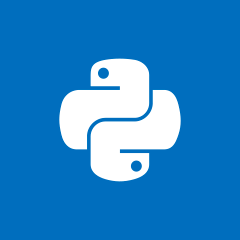Plotly-Dash:希望从单个 df 列并排放置两个堆积条形图
我正在尝试并排放置两个堆叠的条形图,但无法弄清楚。
这是一个示例 df:
Field Issue
Police Budget cuts
Research Budget cuts
Police Time consuming
Banking Lack of oversight
Healthcare Lack of support
Research Bureaucracy
Healthcare Bureaucracy
Banking Mistrust
我想要的是第一个字段的堆积条形图。它的高度为 8,由 2 个警察、2 个研究等细分。然后我想要第一个图表旁边的问题堆积条形图。第二个将有 8 的高度,并被 2 次预算削减、1 次耗时、1 次缺乏监督等堆叠在一起。
我试过了:
获取所有字段的堆积条形图:
trace1 = go.Bar(
x = df.Field.unique(),
y = df.Field.value_counts(),
name='Total Amount of roles'
)
获得预算削减的堆积条形图(然后复制其他问题):
trace2 = go.Bar(
x = df.Field.unique(),
y = df[df['Issue'] == 'Budget cuts'].Field.value_counts(),
name='Budget cuts'
)
data = [trace1, trace2]
layout = go.Layout(barmode='stack')
fig = go.Figure(data=data, layout=layout)
py.plot(fig, filename='test.html')
但是上面的代码将两个图叠加到一个上。我想要堆叠跟踪 1 和堆叠跟踪 2。我也希望将其集成到 Dash 中,而不是单独策划,但老实说,这将是次要的。将不胜感激任何帮助!
 紫衣仙女
紫衣仙女2回答
-

有只小跳蛙
编辑 - 在评论中进行简短对话后,这是我的最新建议:这是一个可能的解决方案,其中包含每列堆叠的每个类别的每个出现次数(字段或问题):阴谋:代码:如您所见,它不是很灵活,因为您必须go.Bar为每个类别(银行、警察等)添加一个对象。但如果上面的情节是你要找的,我也会整理出那部分。# importimport pandas as pdimport numpy as npimport plotly.graph_objs as gofrom plotly.offline import download_plotlyjs, init_notebook_mode, plot, iplotinit_notebook_mode(connected=True)#%qtconsole# sample dataField = ['Police', 'Research', 'Police', 'Banking', 'Healthcare', 'Research', 'Healthcare', 'Banking']Issue = ['Budget cuts', 'Budget cuts', 'Time consuming', 'Lack of oversight', 'Lack of support', 'Bureaucracy', 'Bureaucracy', 'Mistrust']# Put the lists in a pandas dataframe for# easy grouping and indexingdf = pd.DataFrame([Field, Issue]).Tdf.columns = ['Field', 'Issue']grField = df.groupby('Field').count()grIssue = df.groupby('Issue').count()dfgr = pd.concat([grField, grIssue], axis = 1, sort = False)dfgr = dfgr.T# Make one go.Bar() object for each category# for corresponing Field / Issuetrace1 = go.Bar( x = ['Issue'], #y = [dfgr['Field']], y = [dfgr['Banking'].loc['Issue']], name='Banking')trace2 = go.Bar( x = ['Issue'], #y = [dfgr['Field']], y = [dfgr['Healthcare'].loc['Issue']], name='Healthcare')trace3 = go.Bar( x = ['Issue'], #y = [dfgr['Field']], y = [dfgr['Police'].loc['Issue']], name='Police')trace4 = go.Bar( x = ['Issue'], #y = [dfgr['Field']], y = [dfgr['Research'].loc['Issue']], name='Research')trace5 = go.Bar( x = ['Field'], #y = [dfgr['Field']], y = [dfgr['Budget cuts'].loc['Field']], name='Budget cuts')trace6 = go.Bar( x = ['Field'], #y = [dfgr['Field']], y = [dfgr['Bureaucracy'].loc['Field']], name='Bureaucracy')trace7 = go.Bar( x = ['Field'], #y = [dfgr['Field']], y = [dfgr['Lack of oversight'].loc['Field']], name='Lack of oversight')trace7 = go.Bar( x = ['Field'], #y = [dfgr['Field']], y = [dfgr['Lack of oversight'].loc['Field']], name='Lack of oversight')trace8 = go.Bar( x = ['Field'], #y = [dfgr['Field']], y = [dfgr['Lack of support'].loc['Field']], name='Lack of support')trace9 = go.Bar( x = ['Field'], #y = [dfgr['Field']], y = [dfgr['Mistrust'].loc['Field']], name='Mistrust')trace10 = go.Bar( x = ['Field'], #y = [dfgr['Field']], y = [dfgr['Time consuming'].loc['Field']], name='Time consuming')# gather data and set up layout#data = [trace1, trace2, trace3, trace4, trace5, trace6, trace7, trace8, trace9, trace10]data = [trace10, trace9, trace8, trace7, trace6, trace5, trace4, trace3, trace2, trace1]layout = go.Layout(barmode='stack', title = 'Stacked bar chart from single column')# Build figurefig = go.Figure(data=data, layout=layout)# PLot figureiplot(fig, filename='test.html') -

收到一只叮咚
工作代码片段,以防万一这是您需要的:import plotly.graph_objects as gox=['a','b','c','d']fig = go.Figure(go.Bar(x =x, y=[2,5,1,9], name='Montreal', base = 0, width = 0.2, offset = 0.0, marker = dict(color = 'rgb(0,120,255)')))fig.add_trace(go.Bar(x=x, y=[1, 4, 9, 16], name='Ottawa', width = 0.2, offset = -0.2, marker = dict(color = 'rgb(250,60,0)')))fig.add_trace(go.Bar(x=x, y=[6, 8, 4.5, 8], name='Toronto', width = 0.2, offset = -0.2, marker = dict(color = 'rgb(250,130,0)')))fig.update_layout(barmode='stack', xaxis={'categoryorder':'array', 'categoryarray':['d','a','c','b']})fig.show()替代布局: change: base,offset of second figureimport plotly.graph_objects as gox=['a','b','c','d']fig = go.Figure(go.Bar(x =x, y=[2,5,1,9], name='Montreal', base = 0, width = 0.2, offset = 0.0, marker = dict(color = 'rgb(0,120,255)')))fig.add_trace(go.Bar(x=x, y=[1, 4, 9, 16], name='Ottawa', width = 0.2, offset = -0.4, base=0, marker = dict(color = 'rgb(250,60,0)')))fig.add_trace(go.Bar(x=x, y=[6, 8, 4.5, 8], name='Toronto', width = 0.2, offset = -0.2, marker = dict(color = 'rgb(250,130,0)')))fig.update_layout(barmode='stack', xaxis={'categoryorder':'array', 'categoryarray':['d','a','c','b']})fig.show()
 随时随地看视频慕课网APP
随时随地看视频慕课网APP
相关分类


 Python
Python